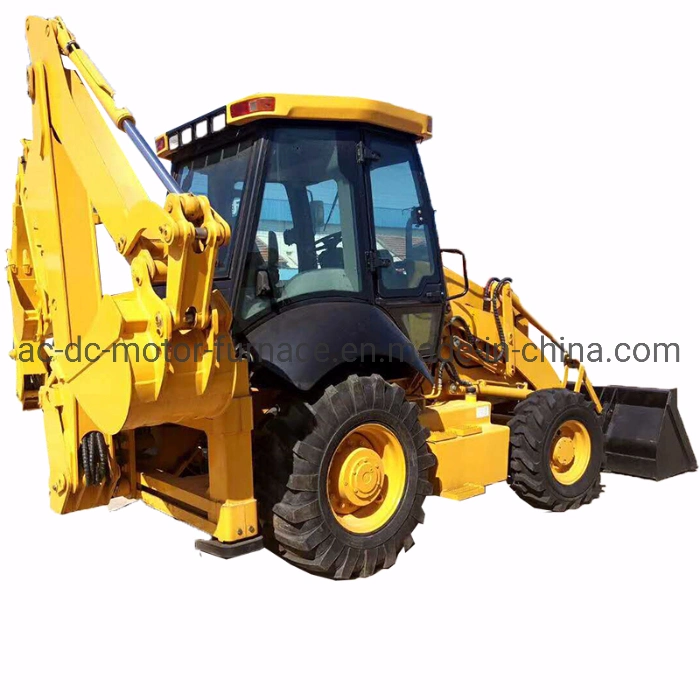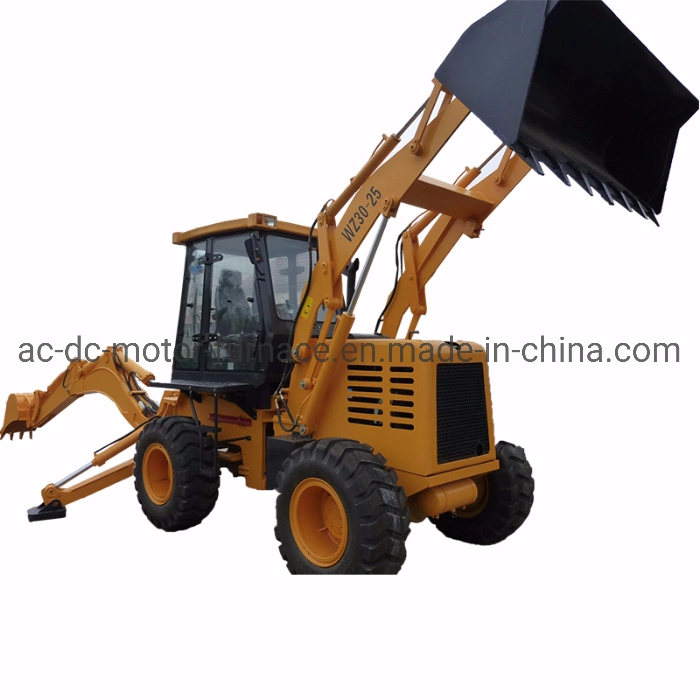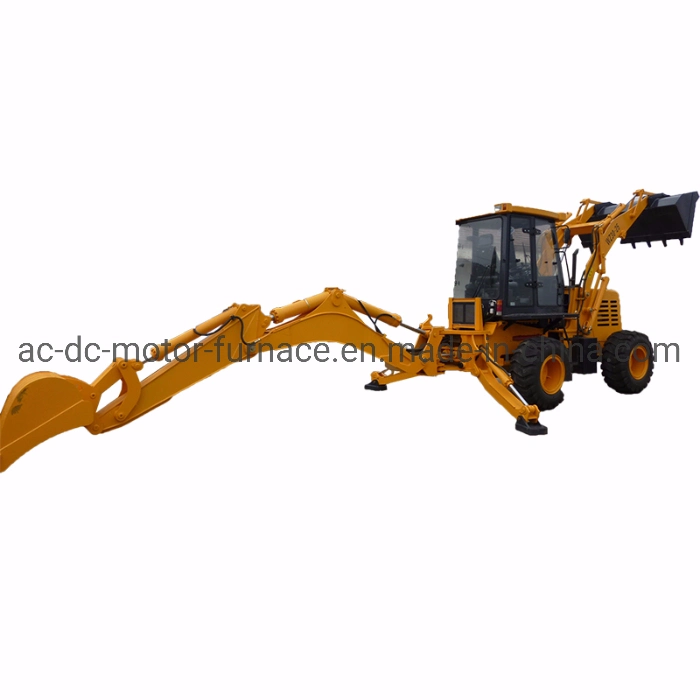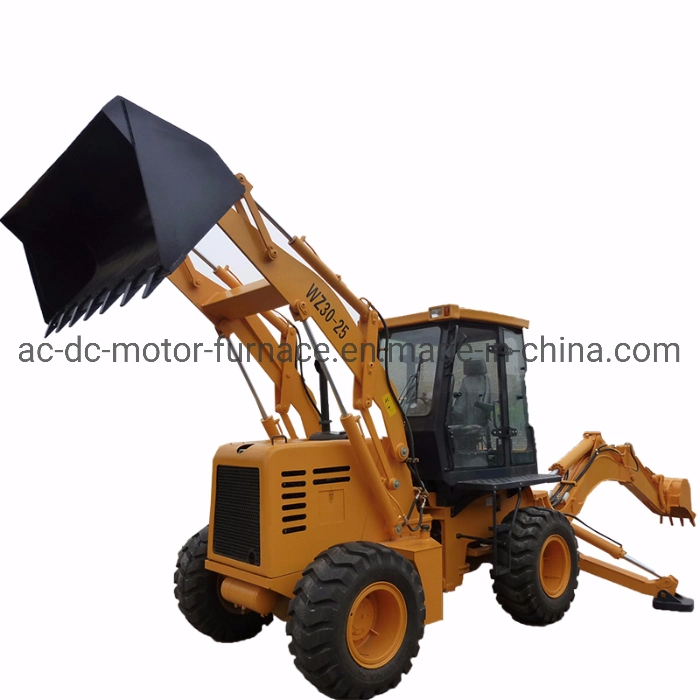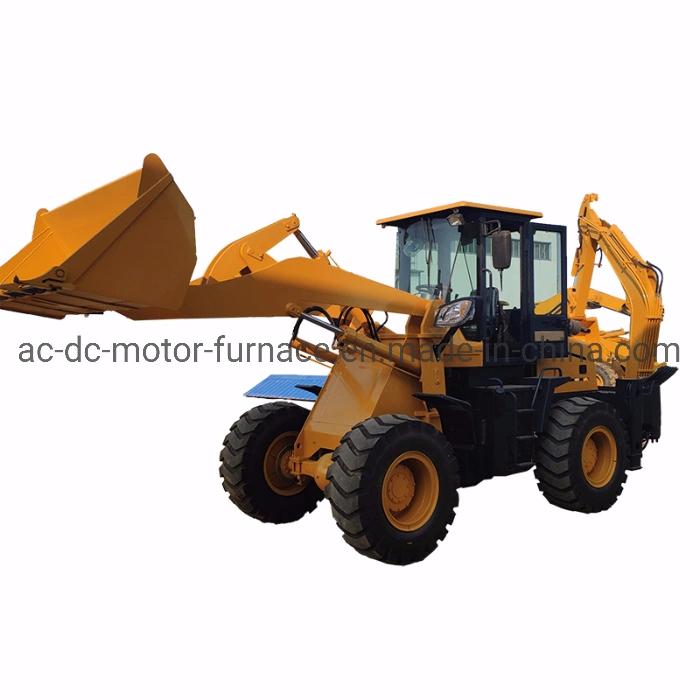Excavator construction machine DX60W-9C Wheel Excavator Loader
| Overall size | Engine | |||||
| 1 | Shape size(mm) | 5800*1850*2750 | 1 | Model | YUNNEIYN27GBZ | |
| 2 | Wheelbase(mm) | 2315 | 2 | form | Vortex Energy Boosting, Four Strokes | |
| 3 | Tread(mm) | 1500 | 3 | Rated power(KW) | 55 | |
| 4 | Minimum ground clearance(mm) | 220 | 4 | Rated speed(r/min) | 2400 | |
| Performance Parameter | 5 | Cylinder Number-Inner Diameter | 4-90 | |||
| 1 | system pressure | 16 | Drive System | |||
| 2 | Weight | 4800 | 1 | Transmission case | Fixed-axis power shift | |
| 3 | Maximum Speed | 26 | 2 | number of gears | Front 2 and back 2 | |
| 4 | Maximum climbing force | 25 | 3 | Hydraulic Torque Converter | ZL29A | |
| 5 | Minimum turning radius | 4000 | Steering System | |||
| Mining Parameters | 1 | form | Full hydraulic steering | |||
| 1 | Maximum excavation depth (mm) | 2700 | 2 | Steering angle(°) | 33 | |
| 2 | Excavation unloading height (mm) | 2200 | Bridge | |||
| 3 | Maximum excavation radius (mm) | 4600 | 1 | form | Wheel edge | |
| 4 | Bucket width (mm) | 600 | tyre | |||
| 5 | Bucket capacity (m3) | 0.2 | 1 | Specifications | 23.5-16 | |
| 6 | Mining Maximum Width (mm) | 4200 | 2 | Front Wheel Pressure(KPa) | 250 | |
| 7 | Maximum excavation force (KN) | 28 | 3 | Rear Wheel Air Pressure(KPa) | 250 | |
| 8 | Rotation angle of excavator(°) | 180 | 4 | service brake | Braking of oil nipper disc | |
| Loading parameters | 5 | Parking brake | Manual | |||
| 1 | Maximum unloading height (mm) | 3300 | Oil quantity | |||
| 2 | Maximum unloading distance (mm) | 850 | 1 | Fuel tank(L) | 40 | |
| 3 | Bucket width (mm) | 1900 | 2 | Hydraulic oil tank(L) | 40 | |
| 4 | Loading bucket capacity (m3) | 0.7 | Other | |||
| 5 | Loading Maximum Lift Height (mm) | 4200 | 1 | Driving Form | Four-wheel drive | |
| 6 | Maximum Rising Power (KN) | 36 | 2 | Variable Speed Form | Hydraulic transmission | |
| 7 | Forward shovel action time and (S) | 12 | 3 | Braking distance(mm) | 4500 | |
Wheel Excavator is a single device consisting of three construction equipments. Commonly known as "busy at both ends". During construction, the operator only needs to rotate the seat to change the working end. The main work of excavator loader is to excavate ditches to arrange pipelines and underground cables, lay foundation for buildings and establish drainage system.
Slag loader commonly used in tunnels is also called rock loader, which is now replaced by excavator loader (bucket loader). Require small size, durable, easy to operate, easy to walk, high production efficiency, continuous uninterrupted operation, but also safe and environmental protection. The running modes of slag loader (rock loader) are tyre type, track type and caterpillar type. According to the arm bucket type of the slag loader, it can be divided into four types: bucket type, crab claw type, vertical claw type and bucket type. The first three types are gradually replaced by the dug bucket type in construction practice. Intermittence can not be continuous, reciprocating is not flexible, working ability is low, the dust caused by insecurity is larger, the operation is inhumane, rock size requirements are small, slope is limited and other defects.
Tire-type slag loader is only suitable for 1.7m space, and can only work in roadways. Its disadvantage is that it is easy to slip and sink and scratch tires in tunnels of water and hard surrounding rocks. It has low benefit and less feeding force. Its advantage is that it is super-small space for slag loading and ore filling, and its price is the cheapest but it is more economical than manual work. Track slag scraper is suitable for supporting rail transportation, which is more economical, but its working scope is limited, and rail erection and laying is more troublesome and can not work on gradient. Its advantages are moderate price, higher efficiency, greater feeding intensity and more scraping. The crawler slag loader combines all the advantages and disadvantages mentioned above, but the earlier investment is more expensive, but the benefit is greatly doubled the cost of construction period to the lowest point at present.
